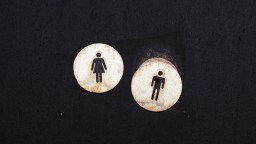Corporate buybacks: Have you heard about this trillion dollar Ponzi scheme?

1. A scheme that was till recently a crime now consumes trillions of dollars. That’s one of many market maladies Rana Foroohar publicizes in her book Makers and Takers: How Wall Street Destroyed Main Street.
2. Share buybacks were illegal “market manipulation” until 1982. They now divert $0.5-0.8 trillion annually from investments, R&D, wages, etc. A slow “corporate suicide” (over $7 trillion extracted by “lootocrats”).
3. Reagan’s SEC chief John Shad (an ex-Wall St boss) legalized buybacks. But Clinton-era folks (Robert Rubin, Larry Summers, etc) accelerated the fox-guarding-chickens games.
4. The justification? Chicago School shareholder value maximization theory (aka “The World’s Dumbest Idea”). And general free market fundamentalism that presumes markets allocate efficiently.
5. Foroohar counters the Chicago catechism with empirical evidence. And markets-know-best folks must face the many facts Foroohar marshalls to falsify their fig-leaf faith. For instance:
6. Only ~15% of flows to Wall St get to real businesses (the rest on games “not unlike a Ponzi scheme”).
7. “Privately owned firms invest more than twice as much… as public firms.” And drug companies spend more on shareholder maximization than on R&D.
8. 80% of our CEOs would “pass up making an investment that would fuel a decade’s worth of innovation” to hit a quarterly target (foreign firms think in “decades rather than quarters”).
9. Walmart did ~$8.3 billion in buybacks in 2016, ~$3,600 per worker. Welfare for Walmart workers cost taxpayers ~$6 billion.
10. Total S&P 500 2016 buybacks = $536 billion ~$22,000 per worker.
11. Any fraction of that recently criminal misuse of money going to workers would benefit us all. They tend to spend more of their gains (generating growth) than the rich (tend to prefer Wall St’s Ponzi-ing).
12. Or that $½ trillion could be spent on “real” economy equipment, etc (as it was till 1982).
13. Business schools literally teach “greed is good,” which encourages short-term exploitation.
14. Bankers now manipulate commodities markets (Goldman Sachs caused food riots in 22 countries).
15. Always ask—what do business leaders serve? What are they loyal to? What would they not harm?
16. To trust those who aren’t loyal to anything beyond their own gain is foolish.
17. Unless business leaders are loyal enough to their companies, customers, employees, communities, nations, to not harm them, the whole market system is at risk (+see Good vs Bad Rich).
18. Buyback shenanigan fixes aren’t difficult. Let’s reban them. Or mandate X% must go to workers.
19. But deeper business leadership diseases will be harder to cure (e.g. the dysfunctional 3-way dance: greedy executives cherry-pick from backseat-driving reality-denying economists to shape policy-maker ideas).
20. If we don’t stop these economy-sapping schemes, the “lootocrats” and their courtiers will continue to take us for a ride.
21. “The 1% grabbed 82% of all wealth created in 2017.”
Illustration by Julia Suits, author of The Extraordinary Catalog of Peculiar Inventions, and The New Yorker cartoonist.





